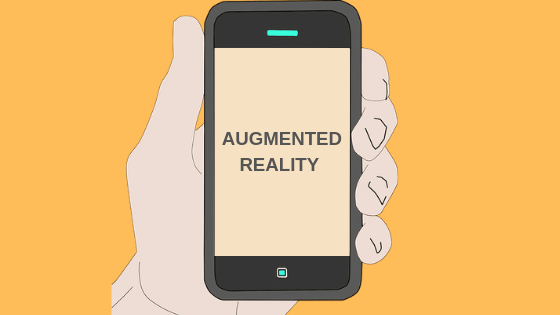News

Elevate Your Brand From The Competition With Interactive and Engaging Experiences

Augmented reality (AR) is technology that overlays digital information like images, sound, and text onto your view of the real world, creating an interactive experience. Early adopters have firmly established AR’s potential. Not only as a marketing channel but as a brand differentiator. It allows a new level of convenience, speed and can leave a lasting brand impression. Tim Cook, Apple’s CEO, has said that AR will one day be as important in our everyday lives as “eating three meals a day.” The question is, how can your marketing strategy effectively capture an audience’s attention once AR has become commonplace?
But beware… Developing AR for the sake of having the “latest” technology will fail. Using AR to make your brand appear innovative can be viewed as forced. And, if AR is the overall marketing campaign, you’re doing it very wrong.
In augmented reality marketing, the AR element must:
Provide a meaningful and branded interaction
Play an authentic role in the communications
Be a gateway to a new reality of brand engagement
There needs to be substance to the experience, beyond just focusing on the technology factor. To understand how to best integrate AR with your brand, think about how your audience will actually interact with it. You will need to go beyond the initial wow factor and create something functional. The augmented content must in some way enhance the physical world it is being superimposed into.
Let’s take a look at AR Benefits:
Helps Customers Visualize the Product
From virtually trying on clothes to placing furniture, AR showcases products in a personalized environment. In 2015, Home Depot released their Project Color app, which uses patent technology to show users what paint color will look like in their home. The AR technology takes into account lighting, objects, and shadows in the room, so you can see how that yellow shade will look in real life. In 2017, Home Depot took it a step further — now, you can also use their app to check out how objects like patio furniture, faucets, and other products look in your home.
Attracts Customers to Your Store
Retailers have made in-store navigation easier and quicker for shoppers with a little help from AR. One example of such technology being put to use is in Lowe’s stores. The brand’s In-Store Navigation app (powered by Google Tango) uses AR technology to create a mobile experience that guides shoppers through the store. Shoppers create a shopping list, and the app identifies the quickest route possible to check off all the items.
Increases Customer Engagement
One study found that AR apps generate nearly twice the level of engagement from customers.
AMC Theatres, understanding their audience is most interested in upcoming movie trailers when they’re at the movies, incorporated AR technology into their AMC app. When a user sees a movie poster in a theatre, they can open the AMC app on their phone, scan the poster, and receive relevant information, including a cast list and a trailer. If they’re interested in the movie after scanning, they can also purchase a ticket immediately, within the app.
Increases Customer Satisfaction and Loyalty
Fifty percent of customers say they’re more likely to shop with a brand that offers AR, MR, or AI. Sephora introduced a “Sephora Virtual Artist” iOS app that allowed customers to experiment with makeup products, finding the right tones and shades that complemented their own face. Sephora’s use of augmented reality isn’t just helpful for users — it also drives sales by appealing to Sephora’s more tech-savvy consumers and encouraging those consumers to become brand ambassadors by recording and sharing their augmented reality experiences online.
Boots Purchase Willingness
Forty percent of people would pay more for a product or service they could experience through AR. In their flagship store in Moscow, Topshop took a common shopping annoyance, long fitting room lines, and turned it into a genius marketing tool: a virtual fitting room. The AR Door used augmented reality to overlay Topshop dresses onto customers wishing to try them on. The AR Door was able to garner interest in Topshop’s new dress collection, converting window-shoppers into buyers.
Attracts a Wider Audience
For the 51% of Americans who prefer online shopping, AR brings the store to users who aren’t near a physical location.
Think about stadium seats, augmented reality enables you to both visualize and interact with a space — two critical functions when choosing how much you’re willing to pay for a seat. For Super Bowl LII, StubHub introduced an AR feature on their mobile app that allowed ticket buyers to see a virtual 3D model of the U.S. Bank Stadium, as well as nearby parking garages and concession stands. This enabled potential buyers to visualize their full experience before purchasing and minimized the risk of paying for a subpar seat.








